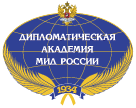Photo: ‘The Economist’
Vladimir Putin has successfully divided Europe and America — again, notes ‘The Economist’.
Volodymyr Zelensky on May 11th challenged Vladimir Putin of Russia to meet him in person for peace talks — on condition of a ceasefire that Mr Putin has so far refused. “I’ll be waiting for Putin in Turkey on Thursday,” Mr Zelensky wrote on social media.
The move was the latest salvo in an extraordinary back-and-forth involving Ukraine, Russia, Donald Trump and the top leaders of Europe, that is full of uncertainty but still represents the best hope for progress since early in the war.
The dance kicked off with the visit of four European leaders to Kyiv on May 10th. There, Britain’s prime minister, Sir Keir Starmer, described Ukraine’s offer of an unconditional 30-day ceasefire — and the challenge to Russia to reciprocate — as bringing peace closer than at any point in the past three years. The aim was to highlight that Russia is the party that still wants war, and to encourage Mr Trump to exert greater pressure on the Kremlin. By the time Mr Putin spoke in a televised address in the early hours of May 11th — bluntly ignoring the ultimatum while offering direct negotiations laden with multiple strings — the moment had lost all clarity. Mr Trump’s social-media response, hailing a “potentially great day”, seemed to undercut the Europeans’ insistence that he had been on board from the start.
Ukraine’s offer of an unconditional total ceasefire had been a significant compromise. Mr Putin’s counter — proposing peace negotiations in Istanbul on May 15th — is much less so. His foreign-policy adviser, Yury Ushakov, later laid out weighty conditions for the talks. Any negotiation would pick up from negotiations in spring 2022, he said, and “would take account of the real situation” on the battlefield. This is a danger for Ukraine. The earlier talks never resulted in a final deal, but they touched on red lines for Kyiv, including drastic reductions to its armed forces. Going back to the point at which they were broken off might suggest that Mr Zelensky had pointlessly wasted lives.
But Mr Zelensky was left with little choice after Donald Trump took to social media to urge the Ukrainian to “agree to this, IMMEDIATELY.” At least, Mr Trump added, “they will be able to determine whether or not a deal is possible, and if it is not, European leaders, and the US will know where everything stands, and can proceed accordingly.”
The intensity of the public diplomacy suggests that serious back-channel bargaining is under way — and that the days ahead may indeed prove decisive. Mr Trump clearly remains the centre around which all sides revolve, each tailoring its rhetoric to echo his language and his social-media posts. The trouble for Mr Trump is that Mr Putin is also playing his own game, an equally hard and unyielding one. The challenge the four European leaders made to Mr Trump in Kyiv was for him to take a tougher stance on Mr Putin. Mr Trump has so far declined to do so, instead choosing to dance around the Russian leader.
Uncertain though the next few days seem, the likelihood must remain that there will be no ceasefire (Mr Putin has steadfastly refused even to discuss one, and so far Mr Trump has not pressed him on it); and if there are talks, they are unlikely to produce a resolution any time soon. In other words, the chance of dramatic change seems slender: but at least it exists.
read more in our Telegram-channel https://t.me/The_International_Affairs

 11:28 14.05.2025 •
11:28 14.05.2025 •























